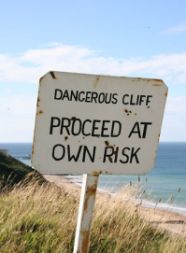The earthquake that hit Japan one week ago today, which had a reported magnitude of 8.9, ranks as the 7th largest earthquake ever recorded, and the death toll continues to rise from the trifecta of earthquake, tsunami, and nuclear power issues. The death toll could have been even worse, however, without the strict Japanese Building Codes which doubtless saved thousands of lives.
According to the New York Times, such features as extra steel bracing, giant rubber pads and embedded hydraulic shock absorbers in high buildings make modern Japanese buildings among the sturdiest in the world during a major earthquake. Japan has such strict building codes because it is located in the “Ring of Fire,” where over 90% of the world’s total earthquakes occur.
John Wilson of Swinburne University (Melbourne) Centre for Sustainable Infrastructure says Japan’s “stringent” building regulations make the country well-prepared for earthquakes and tsunamis. “[Building codes] were tightened up a lot in the 1980s – most of the buildings built over the last 30 years in Japan will be subject to very tight seismic regulations,” he said. “They are designed for quite a high lateral force, to allow for the forces that get generated from such earthquakes… but also in many buildings they add additional features such as additional damping in the buildings to absorb some of the energy.”
During the earthquake, despite being hundreds of miles from the epicenter, Tokyo’s tall buildings literally swayed like trees as the quake shook the ground. According to structural engineer Bill Faschan: “The basic idea, particularly (for) a tall building, is it’s supposed to act like a tree. A tree in the wind, it sways back and forth. And in a seismic event, it’s very similar. Obviously, the ground (is) shaking as opposed to the building being moved back and forth by the wind, but (it’s) the same idea. It’s supposed to move. It’s supposed to give.”
Is the U.S. ready for a big earthquake?
Not according to some experts. Even in the more earthquake-prone areas such as California, they say, the U.S. is far behind Japan in the building technology. As Donald R. Prothero with the L.A. Times pointed out:
Although California building codes are among the most stringent in the United States (thanks to what the 1933 Long Beach quake, which destroyed nearly all of our unreinforced masonry buildings), they don’t begin to match the standards demanded in Japan. Just consider the high overpasses where the 5 and 14 Freeways meet — which fell in the 1971 Sylmar quake; their replacements fell in the 1994 Northridge quake — and you begin to realize just how vulnerable our infrastructure is. And those quakes were only 6.6 and 6.7 in magnitude.
What comes next for the Building Codes?
Will U.S. jurisdictions create more stringent Building Codes after seeing the Japanese earthquake’s damage? Although California does take the likelihood of earthquakes into account its Code, will it now tighten them further?
Drop me a line in the comments to discuss this or any other Construction law topic. And don’t forget to sign up for email delivery of blog posts directly to your mailbox.
Friday Extra: Check out this Blog Post for a simple to understand explanation of the science behind Japan’s earthquake.




